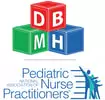Habit Disorders: Overview
Habit disorders are now classified under the broader term Stereotypic Movement Disorder.
- Stereotypic Movement Disorder
result in bodily injury. Common movements include: head banging, rocking, skin-picking and self-biting, and trichotillomania (some of
these are also individual DSM diagnoses).
Differential diagnoses include: autism spectrum disorder, OCD, tic disorders, and dyskinesias.
- OCD and related disorders
Assessment & Screening
- NIMH Trichotillomania Impairment Scale (TIS) (clinician-rated)
- NIMH Trichotillomania Symptom Severity Scale (TSS) (clinician-rated)
Position Papers
- AACAP's Practice Parameter for the Assessment and Treatment of Children and Adolescents with Obsessive-Compulsive Disorder (includes section on Tic Disorders)
Articles
- Recognition and Management of Tourette's Syndrome and Tic Disorders (AAFP, 1999)
- Behavioral Therapy for Treatment of Stereotypic Movements in Nonautistic Children (Miller, Singer, Bridges, Waranch, 2006)
- Stereotypic Movement Disorder: Easily Missed (Freeman, Soltanifar, Baer, 2010)
- Pediatric Trichotillomania (Harrison and Franklin, 2012)
- Trichotillomania, skin picking disorder and stereotypic movement disorder: Toward DSM V (Stein, et al, 2010)
- Behavior Therapy for Children with Tourette Disorder: A Randomized Controlled Trial (Piacentini, Woods, Scahill, et al, 2010)
- Comprehensive Behavioral Intervention (CBIT) for Tics (CDC)
Resources
- (Powerpoint) Behavioral Therapy: Habit Reversal (John Piacentini, PhD)
- How to differentiate tic d/o's
|
Quick links
|
Organizations:
|
